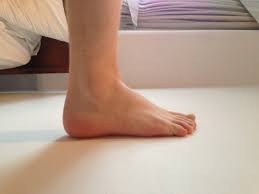 Ankle pain is not unusual. Some people perceive that they have “weak ankles” and are prone to twists and sprains. Others notice a gradual change in their ankle pain and functioning.
Ankle pain is not unusual. Some people perceive that they have “weak ankles” and are prone to twists and sprains. Others notice a gradual change in their ankle pain and functioning.
The ankle is actually a complex joint between three bones: the tibia, the fibula and the talus with bands of ligaments that connect the bones.
In addition to the bones and the ligaments, several tendons traverse the ankle. The tendons connect the muscles of the lower long to the ankle and foot bones. The most famous of these tendons is the Achilles tendon.
It’s important for your health care team to diagnose the cause of ankle pain accurately. Some typical causes of ankle pain include:
- Sprains, which occur when ligaments are overstretched typically as a result of an injury or fall, often a missed step.
- Broken ankles: these fractures are actually quite common, again, usually the result of a fall or missed step, sports injury or traumatic event like a car accident.
- Rheumatoid arthritis affects the synovium, which lines the joints, causing pain, swelling and immobility. Most people with rheumatoid arthritis have ankle issues.
- Osteoarthritis, which contributes to a deterioration of the cartilage in the joints. As this cartilage wears away, the bones rub against one another, and can cause pain, swelling and immobility.
- Gout is another type of arthritis which can affect the joints and is caused by a buildup of uric acid throughout the joints of the body.
- Lupus, an autoimmune disease, often affects many joints, Although many forms of arthritis and related conditions can affect the ankles, the most common cause of ankle pain is a sprain. A sprain occurs when the ligaments that support the ankle become stretched or torn. Here is what you need to know about sprained ankles and some other common ankle injuries.
Your health care team will evaluate your pain, your mobility and the circumstances that surrounded your ankle issues. They will then order a series of exams including x-rays and perhaps other diagnostic tools to determine their next steps. It is very important for a physician to distinguish between sprains and fractures of ankles because they often present themselves in a similar fashion.
Next week: Recovery from ankle pain

